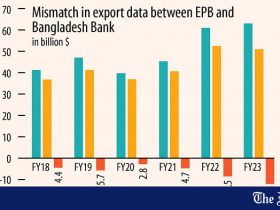Private Sector Employment Bounces Back Stronger Than Expected
The U.S. private sector saw a surprising rebound in hiring during July, signaling continued strength in the labor market. According to ADP’s latest employment report, companies added 104,000 jobs in the month—well above the 64,000 forecast by economists surveyed by Dow Jones.
This recovery comes after a revised loss of 23,000 jobs in June (initially reported as a decline of 33,000), indicating that the job market may still be more robust than previously thought.
Despite broader economic concerns and global uncertainties, the labor market has shown resilience, providing cautious optimism that the slowdown isn’t as steep as feared.
Hiring Gains Point to Resilient Consumer Demand
“Our hiring and pay data are broadly indicative of a healthy economy,” said Nela Richardson, Chief Economist at ADP. She emphasized that employers remain optimistic, driven by confidence in the resilience of the American consumer, who continues to fuel economic activity.
This comes after months of uncertainty related to tariffs and inflationary pressures under President Donald Trump’s trade policies. Yet, recent sentiment surveys show businesses are beginning to regain confidence, even as they remain wary of long-term risks.
Job Growth by Industry: Leisure and Financial Sectors Lead
Several key sectors contributed to the strong job growth in July. Leisure and hospitality, a strong indicator of consumer spending, led the way with 46,000 new jobs. Other top-performing industries included:
- Financial activities: 28,000 jobs added
- Trade, transportation, and utilities: 18,000 new hires
- Construction: 15,000 new positions
Interestingly, while medium and large-sized businesses each added 46,000 jobs, small businesses (under 50 employees) contributed a modest 12,000, underscoring ongoing challenges for the smallest firms in the current economic climate.
Education and Health Services Decline
While most sectors saw gains, education and health services posted a surprising loss of 38,000 jobs in July. The dip is notable considering this sector’s usual stability, and analysts are watching closely to determine if it’s a one-off or the beginning of a broader trend.
Wages Maintain Steady Growth
Wages continued their upward trend, rising at a 4.4% annual pace in July. This increase is consistent with recent months and suggests that employers are still competing for talent, particularly in high-demand sectors.
Wage growth, however, is also a double-edged sword. While it benefits workers, it may keep inflation pressures elevated, complicating decisions for the Federal Reserve on interest rate policy.
ADP vs. Government Payroll Data: What to Expect
While ADP’s data offers an early glimpse into employment trends, it often differs from the official nonfarm payrolls report from the Bureau of Labor Statistics (BLS). In June, for example, ADP reported a job loss while the BLS showed private sector growth of 74,000, rising to 147,000 with government roles included.
Economists expect the BLS to report around 100,000 jobs added in July, with a slight uptick in the unemployment rate to 4.2%. These figures will be critical in assessing the true health of the labor market heading into the fall.
A Labor Market Holding Firm Despite Headwinds
The July rebound comes amid mixed signals in the broader economy. Inflation remains stubborn, interest rates are still elevated, and consumer sentiment has wavered. However, job creation remains one of the strongest economic pillars, preventing a more significant downturn.
With hiring stable and wages growing, many analysts believe the U.S. is more likely to experience a slow-growth phase rather than a deep recession. Still, factors like global trade tensions, energy prices, and policy decisions could shift the trajectory in the months ahead.
Outlook: Balanced but Cautious Optimism
Despite lingering risks, the July jobs report offers hope that the U.S. economy can avoid a hard landing. With employers still hiring and wages holding firm, businesses are betting on the consumer’s staying power to sustain momentum.
Much now hinges on upcoming economic data and policy moves by the Federal Reserve, especially with uncertainty surrounding interest rates and inflation. For now, at least, the labor market remains a bright spot in an otherwise cautious economic environment.
Reference : Jeff Cox







Leave a Reply